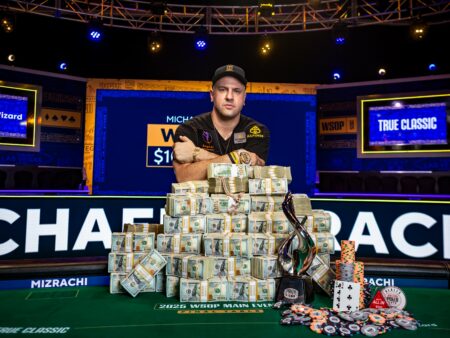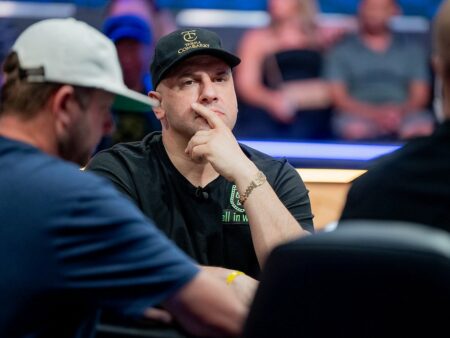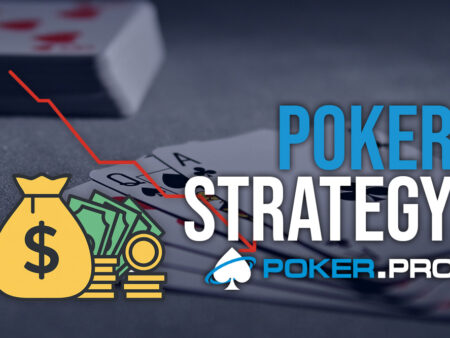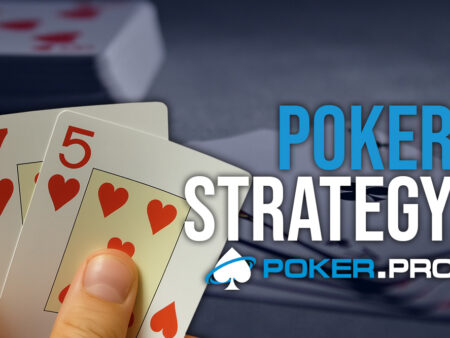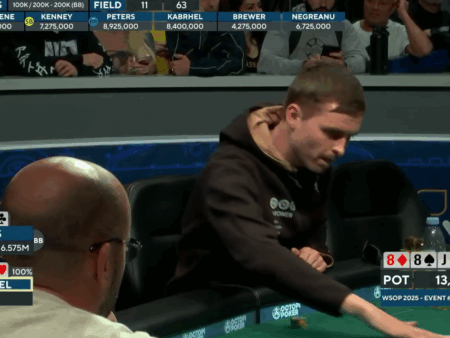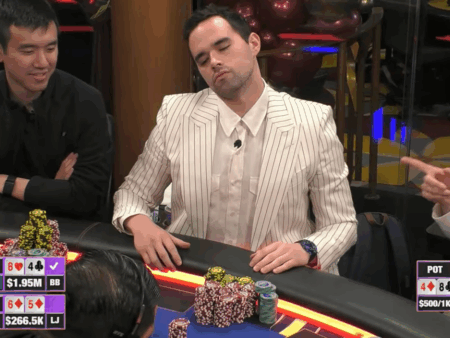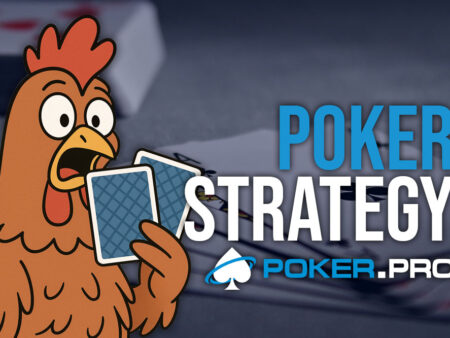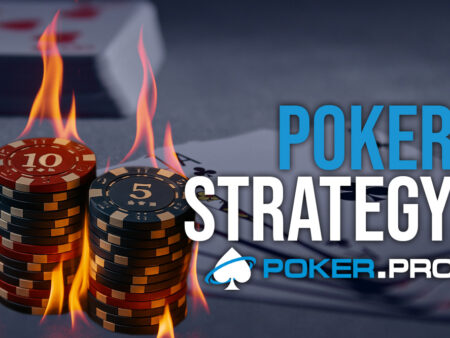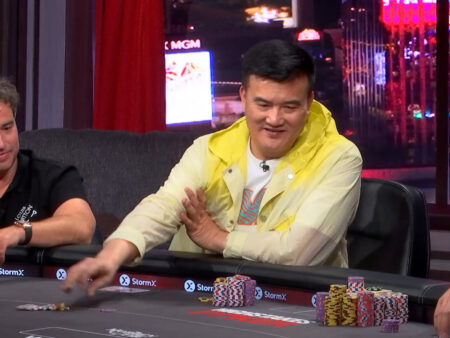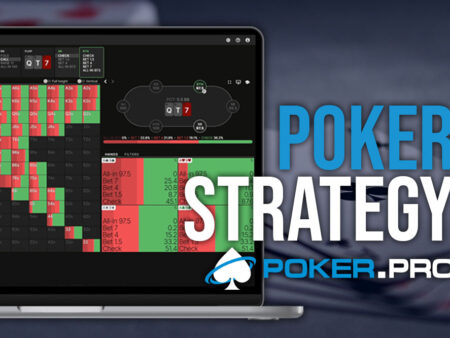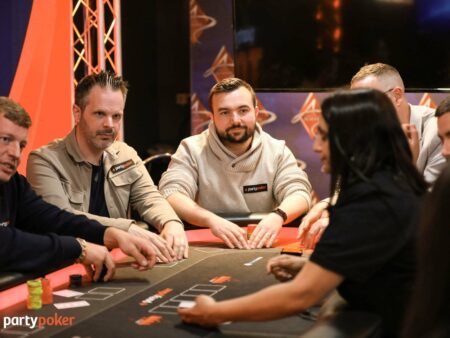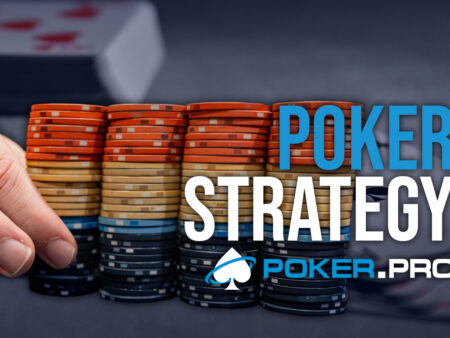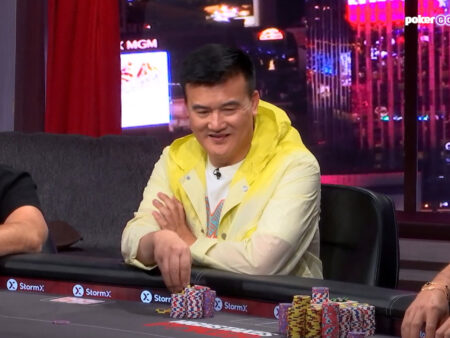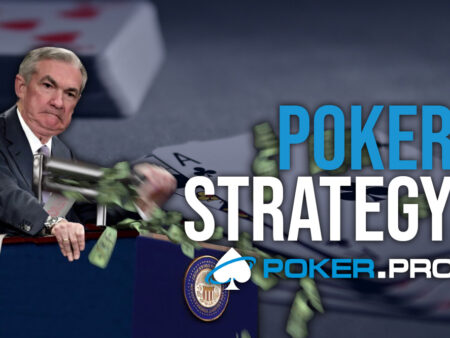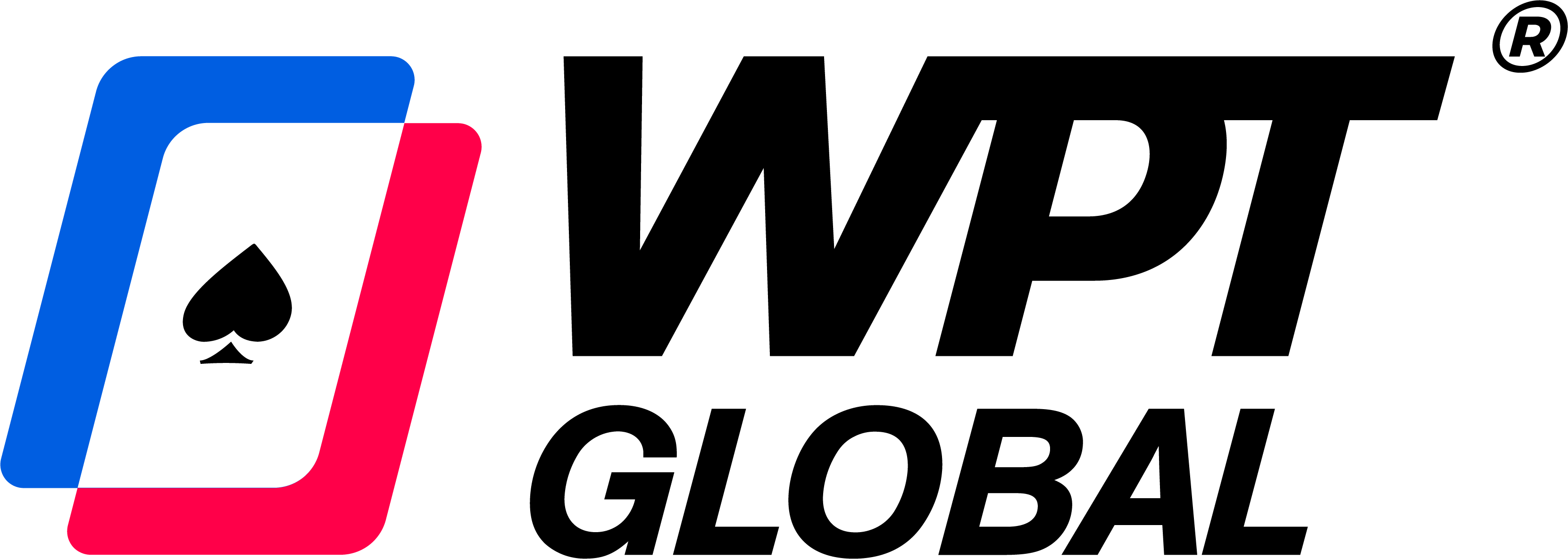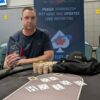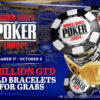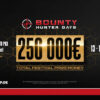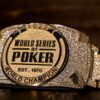One of the most asked questions that I get from my students is, how to play strong overcards on low board postflop. Should I cbet or not? What sizing …
Overcards on Low Board
One of the most asked questions that I get from my students is, how to play strong overcards on low board postflop. Should I cbet or not? What sizing should I use?
It was always the dilemma, are we betting for value or for bluff with AK and AQ if we missed the flop?
Do we lose equity when we cbet and fold out mostly worst hands or do we benefit enough from taking the pot down now? Should we deny equity to 2 random overcards which are worse now but have 25% chance to improve to the river?
Think about ranges
Bear in mind that we always want to think about our whole range on a specific board, not only the hand that we have or specific part of the range.
1st we take into account our betting and checking ranges as whole, then we breakdown those ranges into value-ish and bluff and semi-bluff-ish and then in value range we identify weakest part of it and go up from there, always having in mind our bluffing and semi bluffing ranges.
We all often hear one of the most common questions poker players ask “How do I play AK on this board” and we can’t answer it because it’s not complete. We want to take a look at the whole “range of ranges” in each spot.
Example
Let’s take a look at 742 rainbow board. BTN vs BB single raised pot, 100 bbs deep. BTN opens 2.5x and BB calls.
Flop 7d 4h 2s
We gave solver options to cbet 25% or 67% let’s take a look at how solver sees this spot.
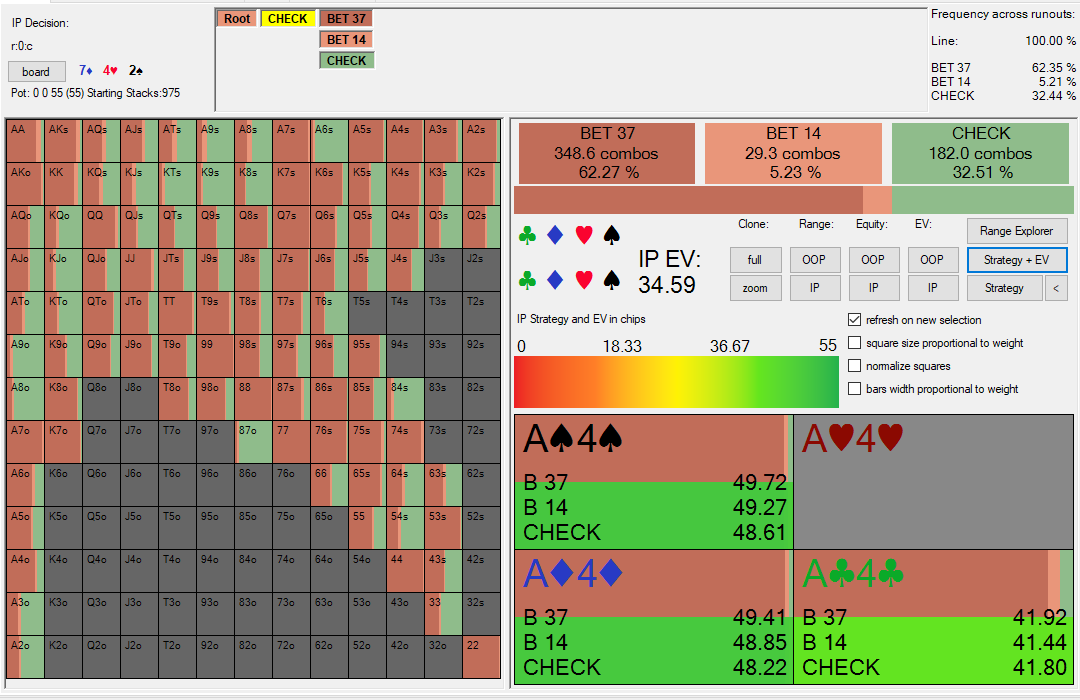
So solver in overwhelmingly higher frequency suggest cbetting 67%. When difference is so huge i advise to only use that one sizing and build other ranges from there, to keep ranges simpler, especially since those smaller bets have same ev as higher ones (when strategy is mixed that’s always the case).
So around 2/3rds of the time we cbet and check 1/3rd.
At first glance we can say that we almost bet all our value hands including AK and also complete air hands such as K8o, J8s, J9s, JTs, T8o, T9o, K6s.
Checking hands are those in between, hands that we want to get to the showdown are KTs, A9o, A6s etc.
Also, always we do check some 2nd pair with weak kickers although if you want to bet them it’s fine and it will be value always.
Do not worry about balance when you bet those in spot like this since your opponent can’t do much about it even if you told him.
WIth AQ, AJ, AT and KQ we have almost half of the times checked and half of the times bet so we just choose AQ and KJ for example to bet always with and AT and KQ to always check and again make our life easier.
With these hands it’s much more important to have them in both checking and betting ranges. We want to have a healthy range to call betts vs our missed cbets and AJ and KQ sounds much better than 84s even if we have 2nd pair with 84s.
Turn
But what should we do with our range on the turn?
Rule of thumb is: if card is hitting our perceived range harder then opponents we bet in higher frequency and vice versa.
In this case any card T or higher favors BTn more and any card 9 or lower favors BB or our ranges are in similar ev. As illustration check out two run outs Kc and 3s.
Kc
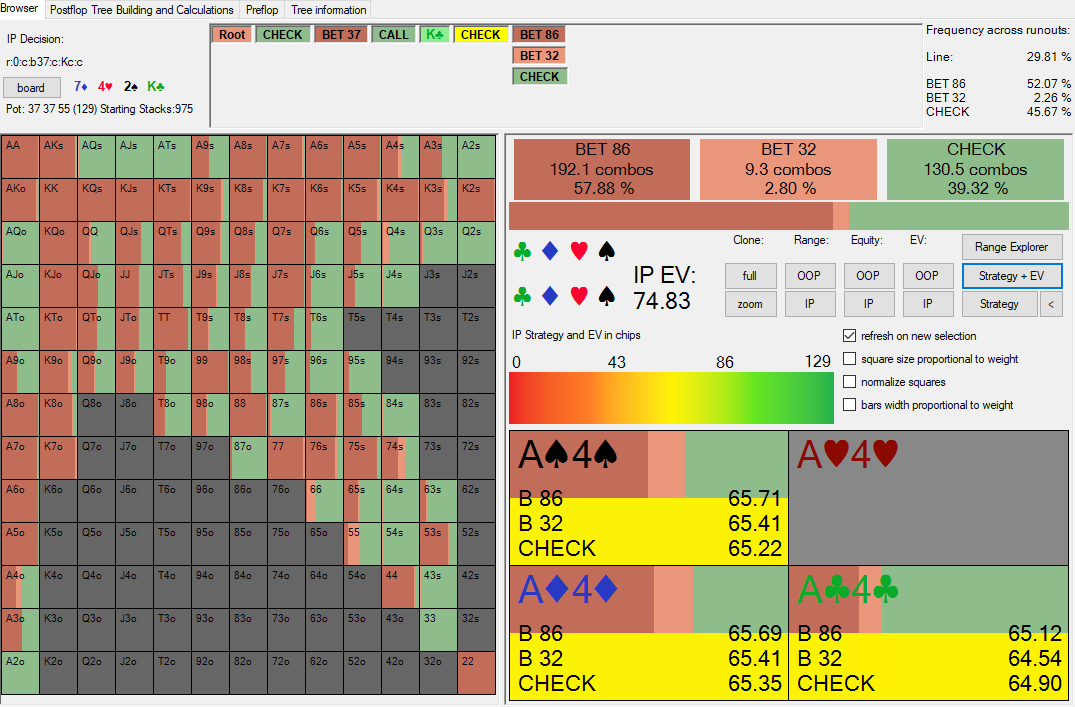
3s

60% bet in 1st case vs 45% in 2nd. That should give you an idea of how to construct your continuing ranges on different runouts.
Conclusion
And this would be good opportunity for some discussion:
- What would you do on blank low rivers on K turn and what on 3 turn?
- Would you deviate from gto, in what situations and why?
Looking forward to hearing from you, gl at the tables!
